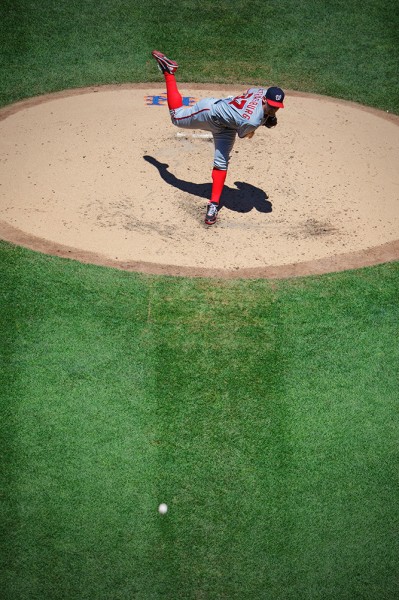Billie Weiss, the Senior Manager of Photography for the Major League Baseball team the Boston Red Sox, had to get creative for this year’s team portraits due to lock-down restrictions. So, as many photographers have, he resorted to FaceTime to capture team portraits of eight players from afar.
‘I was with the team in Florida covering the tail end of Spring Training when the initial Coronavirus outbreak hit in the United States,’ Weiss told DPReview. ‘Games and all other activity at the training facility pretty much shut down immediately, so I flew back home to Boston. Days later, we learned the start of the MLB season would be delayed, and since basically everything in Massachusetts besides the essentials were shut down, I ended up not really leaving the house or shooting much of anything for about 3 weeks.’
 |
It was during this time, in calls with other members of the Red Sox content team, the idea of doing virtual portraits was brought up and agreed upon. Weiss said of the concept (emphasis his):
‘I think the idea came mostly out of a desire to shoot something after sitting at home for nearly a month and missing being able to do what I love — interact with people through photography. I felt like this was a way we could still do something creative involving photography that worked within the limits of social distancing, quarantine, and lack of sporting events.’
For his setup, Weiss gathered up as many Red Six items as he could from around his home and built a mini studio to use as the backdrop. With a basic backdrop ready to go, he arranged the various pieces of equipment and memorabilia, switching it up with each player he photographed. Weiss told us the following about the gear he used:
‘I shot these on a Nikon D5 with the Nikon AF-s Nikkor 105mm f/1.4E lens. For lighting, I used a combination of both a Dracast LED 1000 Pro Daylight continuous light panel with a Profoto B1 Air 500 watt strobe light covered with colored gels. I switched the props and used different color gels from player to player to give the series a bit more variety. Overall, it was a pretty modest setup, but without access to the rest of my gear stuck at the Spring Training facility in Florida, I worked with what I had!’
Weiss photographed eight players, which thankfully ‘thought the concept was strange but cool!’ He attributes the willingness of the players to participate with the relationships he’s built over the years with them. ‘Our relationship is at the point where they trust me with most of our shoots, even something as weird as this,’ he told us. Even better, the players were happy with the results and some even shared the images across their social media profiles.
As for his final takeaways, Weiss told us the following:
‘Overall, I wanted to shoot something with our players that was representative of this crazy time we’re living in, and hopefully this achieves that goal. I think it’ll be interesting to look back on these photos years from now and be reminded of what a strange time this was.’
You can keep up with Weiss and his work on Facebook, Instagram, Twitter, TikTok and his website. You can also subscribe to his Youtube channel for more behind-the-scenes videos.
Articles: Digital Photography Review (dpreview.com)






You must be logged in to post a comment.